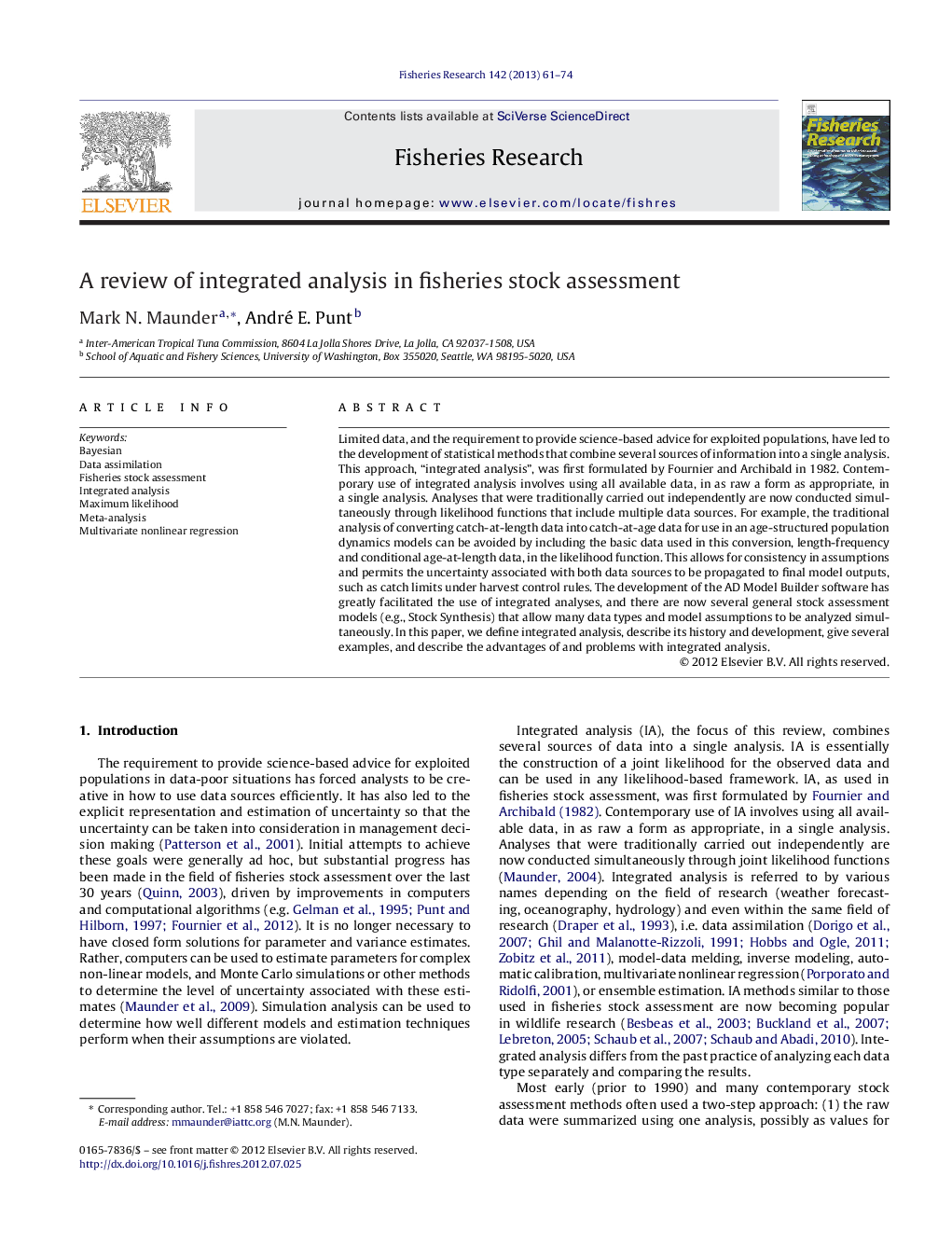| کد مقاله | کد نشریه | سال انتشار | مقاله انگلیسی | نسخه تمام متن |
|---|---|---|---|---|
| 4543133 | 1626826 | 2013 | 14 صفحه PDF | دانلود رایگان |

Limited data, and the requirement to provide science-based advice for exploited populations, have led to the development of statistical methods that combine several sources of information into a single analysis. This approach, “integrated analysis”, was first formulated by Fournier and Archibald in 1982. Contemporary use of integrated analysis involves using all available data, in as raw a form as appropriate, in a single analysis. Analyses that were traditionally carried out independently are now conducted simultaneously through likelihood functions that include multiple data sources. For example, the traditional analysis of converting catch-at-length data into catch-at-age data for use in an age-structured population dynamics models can be avoided by including the basic data used in this conversion, length-frequency and conditional age-at-length data, in the likelihood function. This allows for consistency in assumptions and permits the uncertainty associated with both data sources to be propagated to final model outputs, such as catch limits under harvest control rules. The development of the AD Model Builder software has greatly facilitated the use of integrated analyses, and there are now several general stock assessment models (e.g., Stock Synthesis) that allow many data types and model assumptions to be analyzed simultaneously. In this paper, we define integrated analysis, describe its history and development, give several examples, and describe the advantages of and problems with integrated analysis.
► Uses all available data, in as raw a form as appropriate, in a single analysis.
► Analyses conducted simultaneously combining likelihoods and sharing parameters.
► Includes all information, ensures consistent assumptions, propagates uncertainty.
► Computational demands, model complexity, data weighting are main limiting factors.
Journal: Fisheries Research - Volume 142, May 2013, Pages 61–74